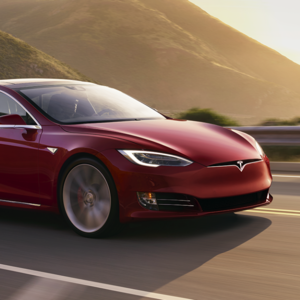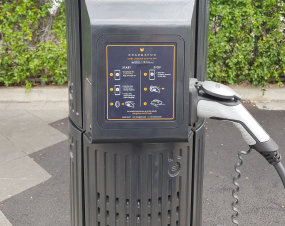
Do we have what we need for an all-Electric future?
The massive growth of EV availability and adoption is a showcase of the best the technology sector has to offer. Every passing year sees batteries last longer, cars drive more economically, and chargers deliver more power in less time. But while these developments are making individual EVs more energy-efficient, they might not be enough to combat the looming concern over mass adoption: overloading the grid.
A joint study from the Melbourne office of L.E.K. Consulting and fast charger manufacturer Tritium has drawn on EV adoption estimates into 2030 and found a number of potential issues for electricity management in a post-EV Australia. Released in November last year, these findings may soon prove prophetic with demand only continuing to rise.
Supply & demand
The study identified three areas of concern for electricity providers: increased overall demand, higher peak loads, and greater unpredictability. Each of these comes with its own challenges, but a coordinated response from electricity providers and the Commonwealth & State governments could mitigate many of the potential issues.
Most EV owners charge at home in the evenings and at night. This isn’t a problem in-and-of itself, but does increase loads on local grid feeder networks when multiple EVs are charging in the same location, street, or suburb. Unfortunately this is exactly what’s happening; current EV adoption trends suggest a ‘clustering’ effect wherein certain areas have a much higher proportion of EV owners than others. According to study data these clusters, in conjunction with peak evening consumption periods, could threaten the capacity of local grid networks.

With 50% EV adoption and using current Australian infrastructure, L.E.K. & Tritium estimate a 30% increase on local grid loads during peak periods. This kind of rise has the potential to overload some networks, particularly feeder lines in cluster areas (residential power wires and poles).
Thankfully those concerns aren’t as serious for the grid as a whole. Overall demand is not predicted to rise significantly in the near future; even with extremely high adoption rates it will take decades for the current crop of cars on the road to be replaced with EVs. With 50% adoption total grid loads are estimated to increase by approximately 15%, but this change should take long enough to give electricity providers plenty of time to prepare and anticipate future needs.
But they might not be able to prepare for everything. Most EVs today increase household electricity usage by approximately 50%, and that usage is further associated with an increase in overall grid load unpredictability. The extent of this fluctuation is tough to anticipate, and utility providers will have to adapt quickly as EV owners start charging en-masse and at their own convenience.
A five-step action plan
So we understand the problem, but what can we do about it? L.E.K. & Tritium have laid out five possible avenues to alleviate and potentially eliminate any issues EVs might pose to the grid.
Utilising smart software to manage charging
At JET Charge we’re familiar with the possibilities of smart software, having co-founded Chargefox for integration with EV charging networks nationwide. By monitoring and mitigating charge-rates during peak periods, utility providers could significantly reduce the unpredictability and maximum load that local feeder networks are exposed to. This will allow more EVs to charge within existing infrastructure, as well as helping develop crucial software solutions for private and commercial networks.
Tariffs and demand response programs
Tariffs may sound sinister, but by incentivising off-peak charging, providers can help promote more even grid loading and maintain the local infrastructure keeping our homes powered.
Improving grid information
Access to crucial grid information will allow businesses to most effectively develop and install public charging infrastructure. By telling customers where the grid is strongest (and weakest), providers will help coordinate the efforts of everyone using and working for EVs.
Accessing adjacent opportunities from charging infrastructure
Installing and managing charging infrastructure requires a sizeable investment, so any opportunities to add further benefits should be exploited wherever possible. Adding battery storage to a charging location could reduce stress on the grid during peak periods, even contributing back to it when demand is particularly high.
Collaborating with charging manufacturers
Working with the industry will prove essential for utility providers as EV adoption grows. Whether it’s charging station manufacturers, supplier/installers like JET Charge, or the EV automakers themselves, both consumers and the industry stand to benefit most when we collaborate on efficient solutions.
However we work to solve this problem, it’s clear that proactive action is the best course to making EVs work within the grid. Teething problems like this don’t even have to be an obstacle; the solutions suggested by L.E.K. & Tritium would all contribute to a better charging network regardless of grid limitations. This is an opportunity to plan ahead and create the best possible future.
Do you think the grid can handle EV mass adoption? Is it even something we should be worrying about? Let us know in the comments and be sure to check back regularly at https://jetcharge.nz/blog for more EV industry updates.



